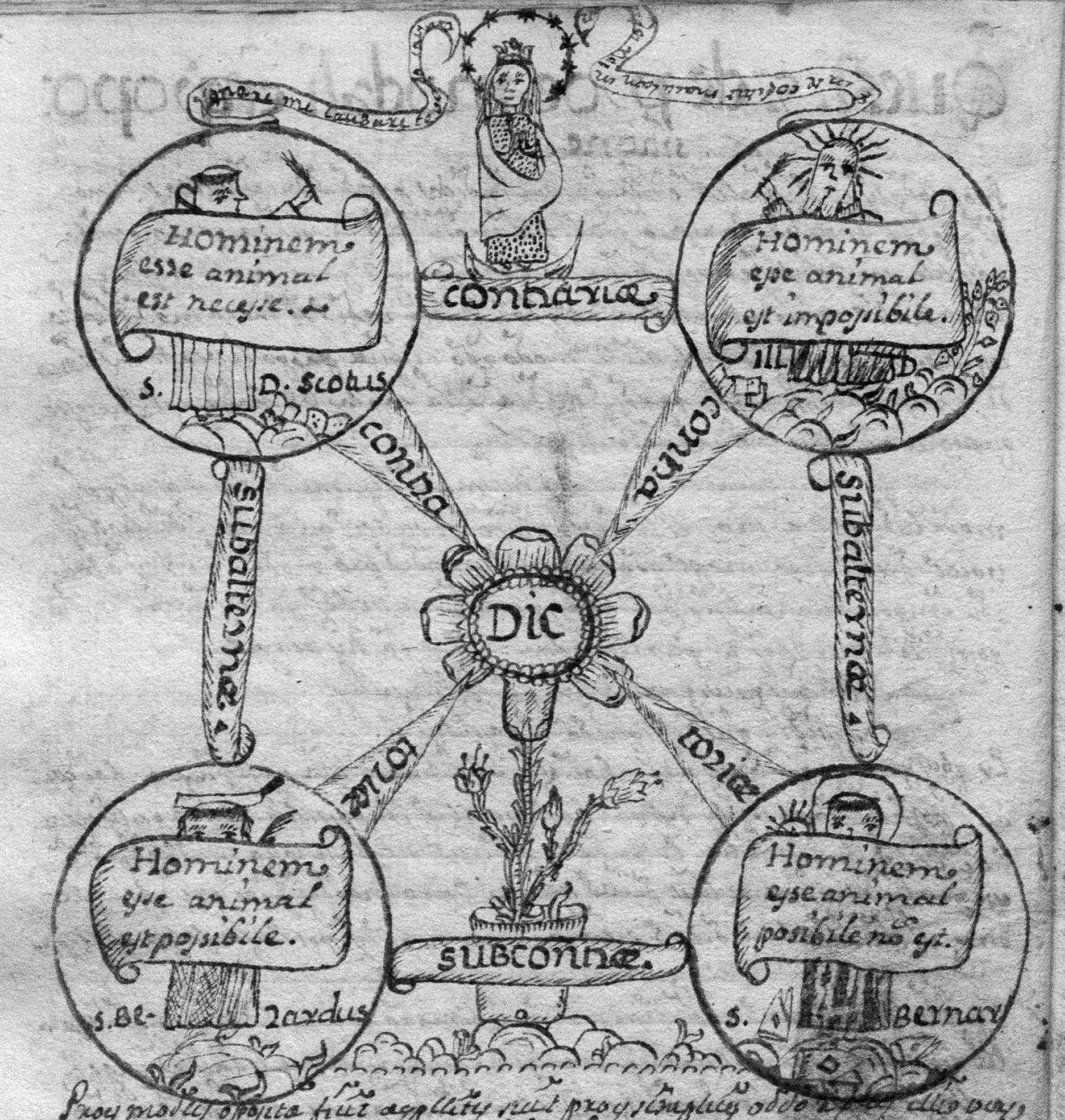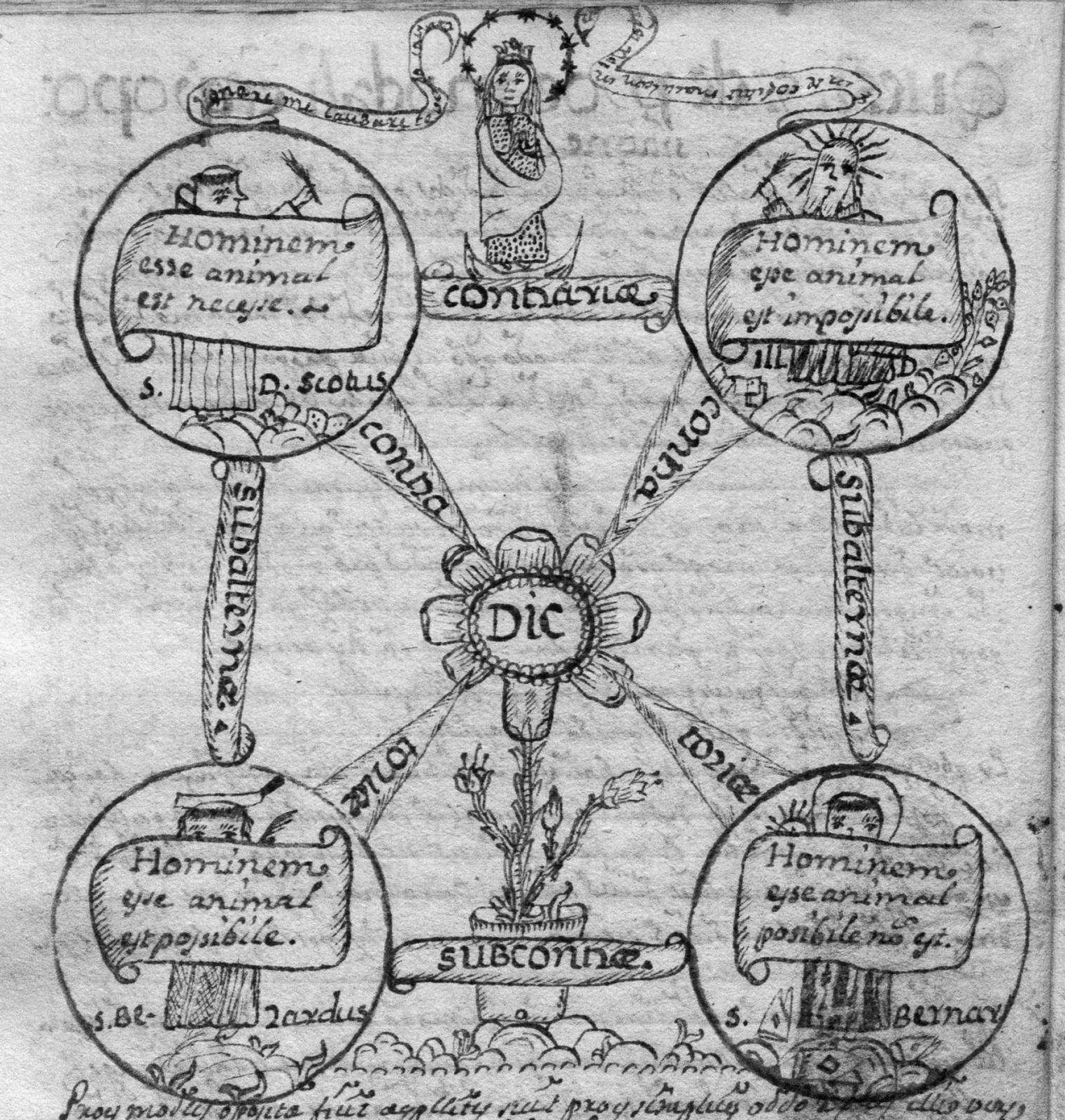
Eiusque Manu Scriptus: Junípero Serra's Mallorcan Class Notes (2018), p. 44
by Dagenais, John

Copyright according to our policy
Caption
- Square of Oppositions (Biblioteca Pública del Estado en Palma (Mallorca). Ms. 882, fol. 115v).
- Aristotelian family
- Classical Sigma-2
- Boolean complexity
- 3
- Number of labels per vertex (at most)
- 1
- Uniqueness of the vertices up to logical equivalence
- Yes
- Errors in the diagram
- No
- Shape
- Square (regular)
- Colinearity range
- 0
- Coplanarity range
- 0
- Cospatiality range
- 0
- Representation of contradiction
- By central symmetry
Logic
Geometry
- Conceptual info
- No
- Mnemonic support (AEIO, purpurea ...)
- No
- Form
- circular
- Label type
- linguistic
- Language
- Latin
- Lexical field
- modalities
- Contains partial sentences or single words
- No
- Contains abbreviations
- Yes
- Contains definitions of relations
- No
- Form
- bands
- Has arrowheads
- No
- Overlap
- Yes
- Curved
- No
- Hooked
- No
- As wide as vertices
- No
- Contains text
- Yes
- Label type
- linguistic
- Language
- Latin
- Contains partial sentences or single words
- Yes
- Contain abbreviations
- No
Vertex description
Edge description
- Diagram is colored
- No
- Diagram is embellished
- Yes
- Tags
- student notebook
Style
Additional notes
- "Five religious figures of primary importance to Serra are drawn in and around the diagram. The Virgin of the Immaculate Conception presides above the square [...] “S. D. Scotus” is drawn within the circle of the “A” Proposition, holding a pen aloft and with his books at his feet [...] In [the "E"-circle] is a drawing of the “illuminatus doctor,” that is, Ramon Llull, the thirteenth–fourteenth-century Mallorcan religious thinker, who is shown in the most common iconography of the day: the rays of his illumination are shown shooting from his head; he holds a pen aloft, like his near contemporary Scotus; and there are books scattered at his feet. [...] The subaltern propositions below [...] are occupied by Saint Berard of Carbio on the left ["I"-circle] and Saint Bernardino of Siena on the right ["O"-circle]. Saint Berard of Carbio was among the first group of Franciscan martyrs, sent by the founder himself to preach among the Muslims of Morocco. He is usually depicted, as here, with a pen in his hand. The scimitar cutting into the top of his head portrayed here is no doubt a reference to Berard’s beheading by the king of Morocco, outraged that Berard refuses to convert to Islam. The sketch’s almost whimsical appearance here may suggest the sort of gallows humor not unknown among young students. However, we should not forget that the mature Serra took martyrdom very seriously; indeed, he saw it as one of the possible, even likely, even desired, ends for his own life. Saint Bernardino is shown with the most popular iconography of the saint: there are three miters at his feet, representing the three episcopal appointments he rejected in order to continue his missions. [...] Overall, Serra’s square seems rather skillfully drawn. It depicts three-dimensional curled scrolls and uses fairly delicate shading. There are various decorative features, including a detailed flowering plant in a pot." (Cf. p. 44-45.)